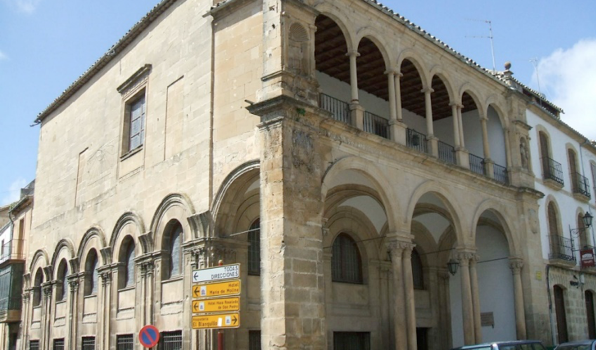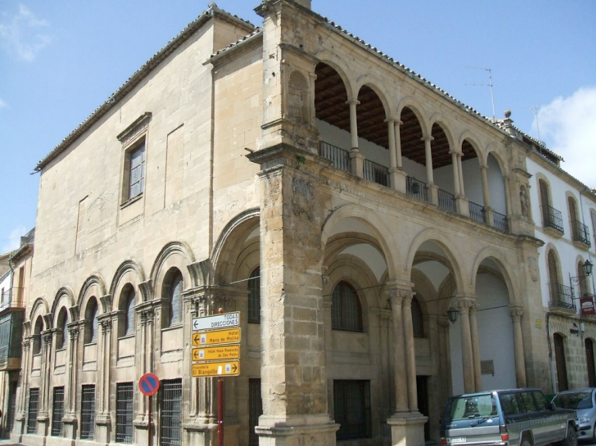
Old town hall houses

Former seat of the Town Hall, it is a magnificent example of Renaissance civil architecture. In the gallery on the upper floor there are two niches, one with the image of San Miguel Arcángel, patron of the city, and the other with Saint John of the Cross. Today it houses the “María de Molina” Conservatory of Music.
In this place the restitution of the body of Saint John of the Cross to Úbeda was unsuccessfully managed. His mortal remains were secretly stolen two years after his death, at midnight, before the city noticed the theft and he was taken to Segovia.
Although the stealth operation was observed by a neighbor on the street, the bricklayer Salvador Quesada, fearing the consequences, he did not give notice until the following day.
It is also interesting to know that Cervantes lived for a time in Úbeda, so he must have been aware of the facts, since he immortalized it in chapter XIX of the first part of Don Quixote, where the famous nobleman begins one of his adventures against “a camisade of twenty ”, who carry a coffin to Segovia, and they indicate that they are coming from Úbeda.
In any case, the city of Úbeda did not resign to the looting and filed a lawsuit with Segovia. The petition for the return of the venerated body of the Saint to Pope Clement VIII was approved in February 1596, in the old town council houses, issuing his Brief Apostolic “Expositum nobis fuit” in which the rights of Úbeda and orders the restitution of the corpse to where he was first buried are recognized.
As is known, Segovia did not return the body and Úbeda, after the long and controversial lawsuit, in 1607 managed to recover part of the relics of the Carmelite reformer, a finger and a tibia, which are in the Museum of Saint John of the Cross.